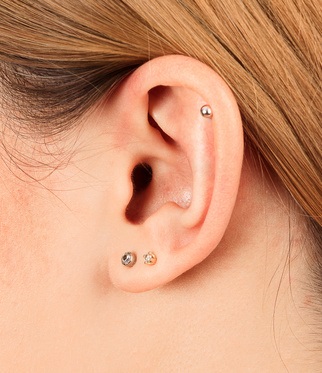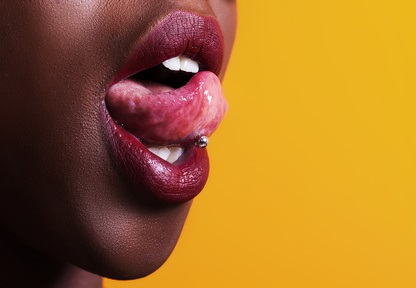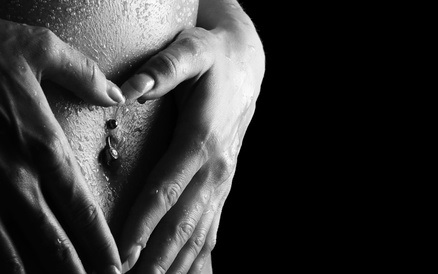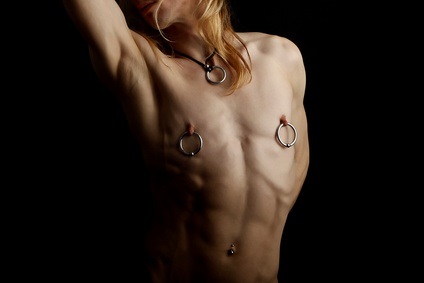Different types of body piercing
Body piercings are becoming more and more common in the United Kingdom. People are also becoming more adventurous about the types of body piercings that they decide to have done.
Developments in piercing technology now mean that there are hundreds of different places on the body that can actually be pierced, including skin piercings on almost any area of the body. Nonetheless, there are a few major areas of the body which remain the most popular places for piercings.
Ears
 Ear piercings are still the most popular types of piercings in the United Kingdom. Because of the complex shape of the auricle (visible part of the ear), there are actually a range of different areas that can be pierced.
Ear piercings are still the most popular types of piercings in the United Kingdom. Because of the complex shape of the auricle (visible part of the ear), there are actually a range of different areas that can be pierced.
Standard lobe piercings are the most basic types of piercings and these can be performed on people of all ages. The tragus (flap of cartilage that covers the ear hole) is regularly pierced, as are the areas closest to the top of the auricle. Piercing areas of the ear other than the lobe requires the piercing to be pushed through cartilage rather than just skin. Piercings that are done through cartilage are likely to take longer to heal than piercings that are performed through skin alone.
If you choose to have a cartilage piercing, you should make sure that you understand and follow all aftercare instructions. People are able to have multiple different piercings on each ear if they choose to.
Oral piercings
 Oral piercings are normally categorised as piercings to the lip and tongue area. Single piercings can be placed above or below the lip area, and they may be central or off to one side. Wearers can also choose between stud jewellery and ring jewellery which actually encircles the lip.
Oral piercings are normally categorised as piercings to the lip and tongue area. Single piercings can be placed above or below the lip area, and they may be central or off to one side. Wearers can also choose between stud jewellery and ring jewellery which actually encircles the lip.
Alternatively, dual piercings are also becoming more popular. Two parallel piercings below the lips are known as snake bites, whereas two parallel piercings above the lips are called angel bites. If you choose to have both sets of “bites” done, then the formation can be referred to as canine bites or shark bites.
Tongue piercings normally only involve one piercing, because the tongue is delicate and the piercing must be precisely located. Piercing the tongue in the wrong place carries the risk of rupturing a blood vessel, which may result in excessive blood loss. This type of piercing should therefore only be done by a skilled professional.
Facial piercings
 The most common types of facial piercings (excluding oral piercings) are eyebrow piercings and nose piercings.
The most common types of facial piercings (excluding oral piercings) are eyebrow piercings and nose piercings.
Subtle nostril piercings are considered to be very fashionable. Piercing the left nostril is also widely practiced amongst Hindu women, because tradition dictates that this area of the body is associated with female fertility.
Septum (cartilage between the two nostrils) piercings are another common form of nose piercings. Although bar jewellery can be worn in this area, many people prefer to wear ring jewellery through their septum.
Eyebrow piercings are a popular alternative to other facial piercings, although a slightly different piercing technique needs to be used. Because the eyebrow has to be pulled outwards in order to push jewellery through the hole, a heavier gauge is required. If the hole is not made in the right place, the force of the skin pulling back towards the skull can actually cause a large hole to rip between the inward hole and the outward hole.
Belly Button Piercings
 This type of piercing tends to be very popular with teenage girls and younger adult women. Belly button piercings normally go through the rim of the belly button, rather than actually piercing into the navel itself. The jewellery that is worn tends to sit in the belly button cavity. Subtle studs can be worn in the belly button area, but bars and hanging pendant pieces are also popular accessories.
This type of piercing tends to be very popular with teenage girls and younger adult women. Belly button piercings normally go through the rim of the belly button, rather than actually piercing into the navel itself. The jewellery that is worn tends to sit in the belly button cavity. Subtle studs can be worn in the belly button area, but bars and hanging pendant pieces are also popular accessories.
Nipple and Genital Piercings
 Nipple piercings can be worn by both men and women, although women who are breastfeeding are not recommended to continue to wear their jewellery. Bars, studs and rings can all be worn in this area.
Nipple piercings can be worn by both men and women, although women who are breastfeeding are not recommended to continue to wear their jewellery. Bars, studs and rings can all be worn in this area.
People can also choose to have just one pierced or do both. It is also possible to pierce multiple different areas of both the male and female genitals. If you do decide that you would like to have your genitals pierced, it is important that you use a qualified piercer who understands the anatomy properly. Incorrect piercing placement or poor aftercare can lead to genitourinary infections and may reduce fertility levels.
All types of piercings hold inherent risks. You can mitigate these risks by having the procedure done at a licensed parlour and following any aftercare advice that you are given. If you experience any unusual symptoms at the piercing site or if you start to feel sick in the days after a piercing, you should seek medical attention as soon as possible.